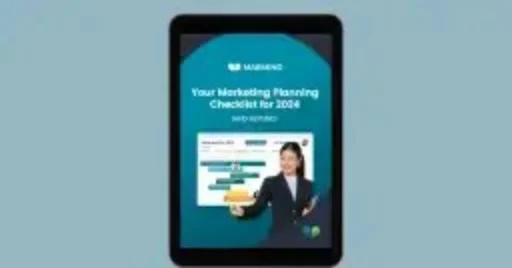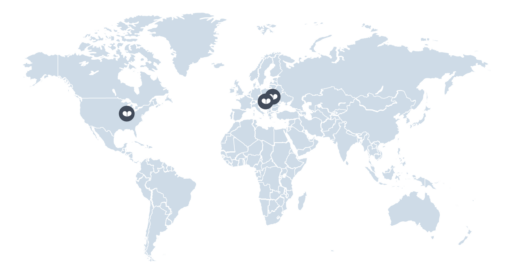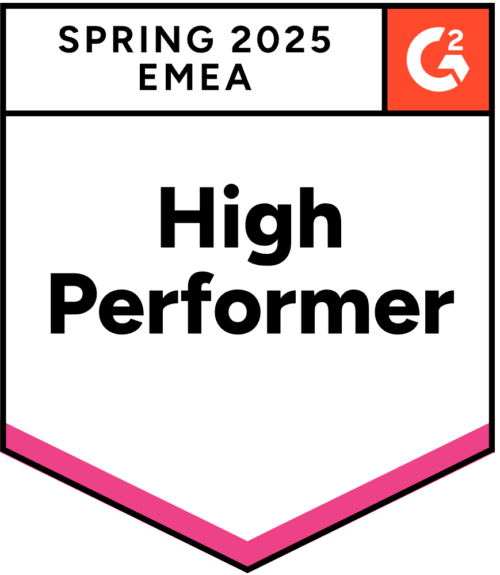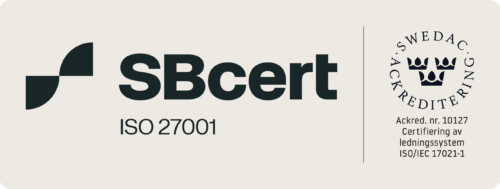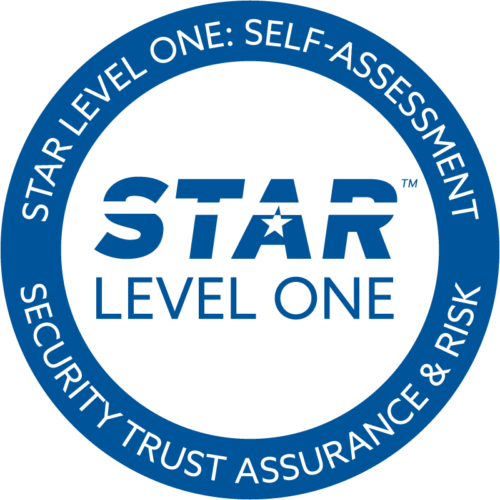
MRM – yet another three-word acronym from the marketing world. But let’s be honest: Could you explain the term Marketing Resource Management in a nutshell? Or are you seeing it for the first time?
This article will tell you what the term means, when an MRM solution becomes a worthwhile investment for your company, and which companies are already making successful use of MRM.
What Is Marketing Resource Management?
According to Gartner’s glossary, Marketing Resource Management software includes the following features:
- Strategic marketing planning
- Strategic budgeting
- Program management
- Development and distribution of creatives (images, videos, etc.)
- Content management
- Media planning and execution
- Event coordination
- Resource measurement
The idea behind MRM is simple: When a marketing department researches a certain size, it needs a central platform for managing and effectively using their marketing resources (budget, personnel, content, brand).
Firstly, Marketing Resource Management software provides an overview of available resources. Secondly, it allows resources to be allocated efficiently. And thirdly, it tells you how effectively resources have been used by evaluating the success of marketing measures.
So, at MARMIND we see planning, budgeting, and results as the three central pillars of Marketing Resource Management:
PLANS
Keep on top of your marketing activities with an interactive marketing plan.
BUDGETS
Plan and manage your marketing spend from start to finish.
RESULTS
Monitor and track campaign performance across channels.
We want to provide answers to the three main questions decision-makers in marketing are asking: Which resources are available? How can I make the best use of these resources? What is the result?
Let’s take a closer look at the three pillars:
Marketing Planning
MRM software not only helps with the creation of marketing plans. It provides project management features developed specifically to help marketers efficiently implement planned measures. So marketing teams gain a central platform for collaboration.

Instead of reaching decisions via email, employees can leave comments directly on the platform in the relevant context. And tasks can be easily managed using to-dos. Which also means transparency around who is currently working on which task.
Marketing Budgets
An MRM system typically allows for top-down budget allocation. The big advantage over using spreadsheets is that the budget data are connected with planning data. So, when you look at a marketing plan to check, say, a campaign, you can directly view the allocated budget.

MARMIND maps both budgets and costs, allowing marketers to effectively evaluate the success of marketing measures. This also makes it possible to maintain an overview of costs incurred and the remaining budget available.
Results Measurement
We’ve now seen that MRM ensures transparency and clarity in marketing. It creates the conditions needed for a team to work together efficiently. But this isn’t the end of the story. At the end of the day, a marketing team’s success is measured by its results.
And so the third pillar of MRM is performance measurement.
The idea behind this is, again, pretty simple: When planning data are connected with results, this provides a much more exact picture. So instead of using different tools for planning and performance measurement, both are combined on one central platform. And – you guessed it – this leads to even greater clarity and organization in marketing.

The Cherry on Top: Processes and Workflows
So we’ve covered all the main features offered by MRM software.
But a comprehensive Marketing Resource Management platform goes a step further and incorporates yet another central topic in marketing: workflows and processes.
This makes it possible to manage tasks such as approval processes far more efficiently. Using MRM software, one of our customers, a well-known drinks company, was able to reduce the time taken up by approvals by an impressive 60 person-days per year!
This was not only because the approval process was digitalized. The entire process was carefully analyzed before implementation and redesigned to minimize inefficiencies.
This is yet another big advantage of MRM: The right provider doesn’t just sell you a tool but analyzes your existing marketing processes and highlights potential for improvement.
End-to-End Marketing Processes
If you want to achieve truly consistent marketing processes you need more than an MRM platform working in isolation. Other marketing tools such as DAM, PIM, marketing automation, CRM, or marketing analytics are connected to the platform to ensure that all aspects of marketing can be managed efficiently.
Better MRM systems also allow for connectivity to business software typically used in HR and finance – for example, an ERP system. The marketing department can thus benefit from an even more complete picture, and there is no need to manually import data.
MRM – Is It Worth the Investment for My Company?
Our many years of experience working with MRM projects have shown us that 10 employees in marketing is the point at which an MRM solution becomes worthwhile.
With 10 people the processes in a marketing team are already so complex that MRM software can significantly increase efficiency.
Because let’s be honest: Who hasn’t had to wade through dozens of spreadsheets when managing content plans, budgets, and KPIs?
Those infamous plans that are uploaded to Sharepoint and sent by email – and nobody is ever quite sure whether the plan is really up to date.
And that’s without mentioning the conflicting versions when several people are yet again working on the same document.
We’re not saying that marketers should stay clear of spreadsheets at all costs. Up to a certain point, using these tools does make sense from a cost-benefit perspective.
But once the marketing department has reached a certain size, and agencies and freelancers are involved, an MRM solution becomes a good investment.
3 Very Different Companies That Already Make Use of Marketing Resource Management – with Great Success
The following three examples reveal which advantages Marketing Resource Management can bring to companies and organizations in very different sectors.
Deutsche Telekom: Digital Transformation in Marketing with Marketing Resource Management
Europe’s largest telecommunications provider Deutsche Telekom introduced MRM as part of a comprehensive digitalization project in marketing.
Instead of operating separately, marketing tools are combined in a central marketing portal. The Marketing Resource Management platform MARMIND is used to plan, manage, and monitor Germany-wide marketing activities.

The most important results:
- The marketing team can implement projects faster.
- There is a central marketing dashboard.
- On-going campaigns can be effectively managed.
Sharp NEC: Marketing Resource Management and Marketing Automation as an Integrated Complete Solution
Display manufacturer Sharp NEC wanted to introduce marketing automation and came to the conclusion that successful marketing automation required Marketing Resource Management.

Marketing processes could be significantly optimized through a clever combination of MARMIND, Acoustic Campaign, and Salesforce.
This led to time savings of around 17 person-days per month.
In particular, it was possible to drastically reduce the work involved in sending marketing emails and in campaign management.
Mondi: Efficient Marketing Processes Thanks to Marketing Resource Management
When international packaging and paper enterprise MONDI decided to reposition their marketing, they realized that they would have to invest in their tech stack. One of the things they started looking for was a central platform for planning, budgeting, and collaboration.
It soon became clear that MARMIND’s Marketing Resource Management platform was just what they wanted.
So, what has changed for them after introducing MARMIND?
- There is greater transparency in marketing and coordination processes have become simpler.
- Recurring tasks can be managed much more efficiently.
- A central marketing plan provides a better overview and greater clarity.
So: MRM Provides the Basis for Successfully Managing Your Marketing
It is difficult to imagine medium-sized and large companies operating without solutions for CRM, marketing automation, social media management, and marketing analytics.
Now, more and more companies and organizations rely on Marketing Resource Management to make efficient use of these tools and to optimize processes in marketing.
Want to know whether MRM is right for your company? Then book a meeting for a free consultation now. We look forward to hearing from you!
Author

Johanna Dungl
Johanna is Online Marketing Manager here at MARMIND and our lead content creator. When she’s not working on new content, she’s usually busy creating and managing marketing campaigns.





